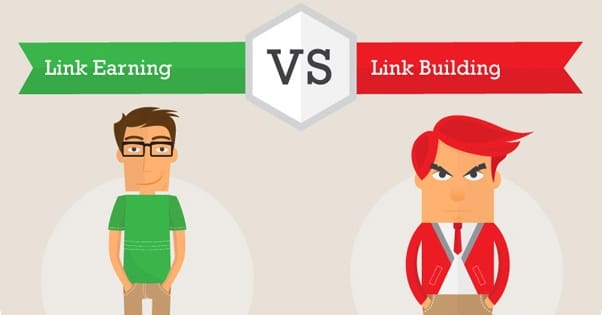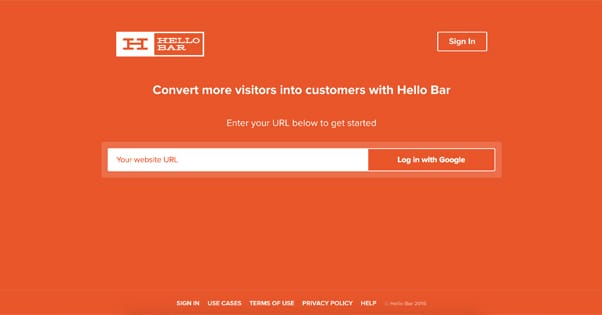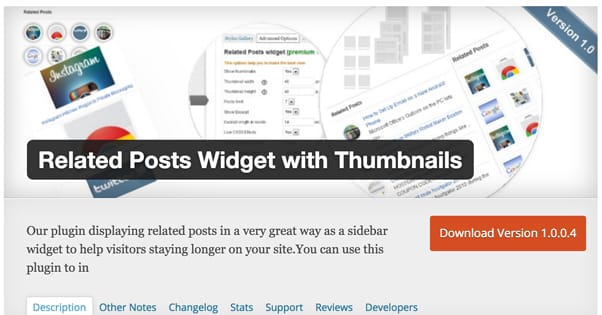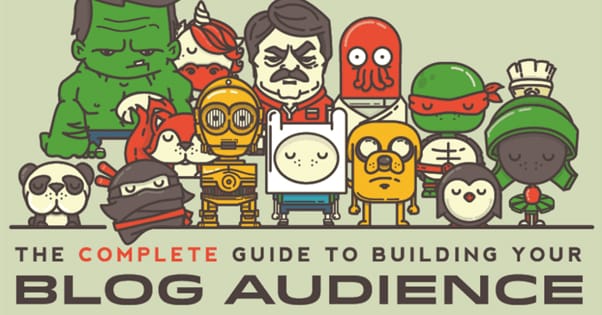5 Services to Help You Get More Links to Your Blog Posts
Published by Kenny Novak • Content Marketing • Posted May 13, 2016 ContentPowered.com
ContentPowered.com
Growing online is all about links. When we come right down to it, almost everything in SEO is about soliciting, gathering, accepting, or purchasing links. Paid advertising is just buying temporary links. Meta information is helping to get Google and the other search engines to link to you. The old PageRank, the new Majestic link rankings, the Moz ranks; it’s all an analysis of the links coming into your site and where those links come from.
Of course, what is a link? Mechanically, it’s a pathway, a road from site A to site B. It’s a way users can get from page to page within a site, or to site to site within the internet. There’s more to it than that, though.
A link passes two things; value and traffic. The traffic side is easy. With nofollowed links and with paid advertising, that’s all you’re getting. You’re running links in high profile locations with the intent of making them visible, so that people click them and land on your site. Those people, once on your site, have a wide range of options. They might leave immediately, they might read one post and leave, they might fill out an opt-in form, they might subscribe to an RSS feed, or any of a thousand other actions.
The other side of the link coin, value, is more invisible but potentially more valuable. A link that no one clicks is still a link, and it’s still bringing you some value, though different measurements will measure that value differently.
Using the Majestic flow metrics as a baseline, links pass value based on the value of the site linking to you, and your relevance to that site’s content.
Some examples:
- A high profile site about gardening linking to a site about video games probably isn’t going to be very valuable, since the topics are so different.
- A high profile site about gardening linking to a site about gardening is going to be very valuable, since the site initially is very good, and the linked site is relevant.
- A low quality site about gardening linking to a site about video games isn’t going to be valuable at all. In fact, since it comes from a poor site and goes to an irrelevant site, it may be considered spam.
- A low quality site about gardening linking to another site about gardening is going to be of minor value, because the two topics are similar, so long as neither site is obviously a spam site.
The value of a link goes up the more valuable a site doing the linking is, and it goes up the more relevant the subjects are between the two sites. Inversely, the greater the separation in topic, the less valuable the link is. Buying a ton of links regardless of their origin is a spam signal and can hurt a site, and it’s also part of the basis of negative SEO.
So how can you acquire links to your site? More importantly, how can you acquire links to your site that are valuable, and not just worthless or spam?
The answer is, of course, by providing value yourself. The more valuable your site is, the more people will want to link to you. The more links you have, the more you grow, and the more you’re going to attract links. Some of them will be low value, sure, but as long as they aren’t actively detrimental, they’re fine to have.
So how can you provide more value? It all logically follows from step to step, right up until you get here. This is where you can’t logic yourself into more value, you just have to find additional ways to bring it to your site.
The number one option is, of course, content. Content is the primary source of value on any website. The more value you provide via content, and the more content you provide, the more value your site has as a whole. However, content isn’t easy to produce and add to your editorial schedule; at some point, either the quality goes down or you’re just flooding out your best posts in a sea of mediocrity. Even if you maintain high standards for the whole thing, people only have so much attention to go around. You can’t just publish a thousand articles a month and be the next Huffington Post.
The added value I’m talking about comes from third party services that add something to supplement the content on your site. These are services that help bring in and keep around the people who visit your site, and who are interested in your content. The more of these you get, the more you’re going to be retweeted and shared, and the more content creators are going to be aware of you. It’s those content creators you want to see, because they’re the ones who will link to you in their own posts.
What I’ve done, then, is compiled five different means of adding value to your site. You don’t have to use all of them – in fact, doing so might be an overwhelming amount of “value add” on top of content that can’t support it – but you should strive to use at least three.
Hello Bar
Hello Bar is a plugin, a script that runs on your site when a user visits. It creates a bar at the top of your page, which can be customized to show text and a button or simple form depending on your objectives. If you want to direct people to a landing page, you can do so. If you want to harvest email addresses directly for a mailing list, that’s available too.
There are plenty of guides out there about how you can use Hello Bar to increase your conversions, your sales, or your traffic. One of my favorite is the free offer. You can create a landing page with an offer of some kind on it. A free ebook in exchange for an email address is a good idea, as is something even more free, like a free trial of your product. Keep the landing page otherwise out of sight, and use the Hello Bar to point to it.
You get two kinds of value out of this. First, anyone coming to your site who hasn’t seen the Hello Bar before gets to see it, and they can be directed to your landing page, where they can claim your offer. Most of the time, claiming the offer will be beneficial to you, either because you’re giving away something that can hook people, or because you’re harvesting email addresses or other data when you do.
The other kind of value is in seeing how effective the Hello Bar is at attracting users. If you send them to a specific landing page that isn’t linked to from any other bit of advertising, you learn just how effective the bar is. Their own built-in analytics help with this quite a bit, showing you the emails you’ve harvested or the clicks you’ve gotten in comparison to the views you’ve received.
If you’re creative, you can fairly easily increase your inbound links with Hello Bar.
Related Posts Widgets
There are two kinds of related posts widgets I’m going to talk about here. The first is the face value related post widget. It will create something – a sidebar, a bar of images in or under a blog post, anything like that – and it will show thumbnails and descriptions or titles of the posts on your site. These encourage users to click through to other parts of your site, using a sort of modified clickbait concept to attract curiosity through images and teasing text, without going full “you won’t believe what happens next.”
This is setup for the second kind, and you should have both kinds working at once. The second kind is what’s called native advertising, and it’s paid advertising that looks and feels just like your internal links. Sites like Outbrain and Taboola offer native advertising through “related post” widgets that, rather than link to other pages on your site, link out to other websites.
Now, this second kind of related post widget might not increase links coming into your site by much, other than those that come in through the other people running the widget. However, what it does is gives you money via the earnings from the clicks you send through those native ads, so you can spend that money on other forms of value improvements throughout your site.
By having related posts visible at the end of your blog posts, you can keep visitors reading on your site for longer, making them more likely to link and share your content.
Reddit Ads
Reddit is one of the largest social networks on the internet focused solely around content aggregation and production. Different subreddits are dedicated to different subjects, everything from the celebrity-enticing “ask me anything” to the team sports pages to the game channels to the job hunt subs. When you browse the site, you see a list of titles and some basic information about the content of the post, like the number of comments it has received its vote count, who posted it, and a thumbnail of the content.
Reddit ads bring value to your site by bringing people from Reddit to your site. Reddit is unique among web communities in that it is absolutely packed with content creators. Plus, links from Reddit are valuable on their own.
Reddit ads appear in subreddits according to your selection and targeting. They can appear before audiences of thousands or hundreds of thousands of people. They can take on an organic life of their own, because there is very little to differentiate them from organic posts. As long as you don’t treat them like normal PPC ads and instead treat them like discussion threads, you can get plenty of people contributing. The only sign that the ad is an ad is the “sponsored link” in the bottom right of the post.
Content Syndication
Content syndication is a way certain networks of sites can share content with one another, appearing as though they are one massive site in a certain sense. It’s a lot like the “related posts” widget, except instead of just linking from site to site, it actually posts content on those other sites. The Yahoo network of syndication sites is one of the most prominent examples.
There are some great benefits to syndicating your content. Your content – complete with links back to your site – appears on websites that have far, far more SEO clout than you do. Your posts will then rank very highly, and those links will send a lot of traffic your way. You reach a huge audience you won’t normally see.
The drawback is that syndication takes a lot of value away from you as well. If you write an awesome post and syndicate it to Yahoo, Yahoo is the site that gains all of that value. You don’t gain much in the way of search ranking, because a much more powerful site is posting the same content. Syndication won’t trigger copied content penalties if done right, but if the syndicating site doesn’t put in the right code, you might be hurt by it.
Syndication is great for a small selection of posts, but it’s terrible if you try to syndicate everything on your site. The more you syndicate, the less value you get on your site itself; all the value is spread out to the other sites posting your content. If you want your content to exclusively be on other sites, either work as a writer for those sites, or guest post.
Embedded Content
Ever seen an infographic on a blog, that wasn’t the blog that originally created the infographic? That’s embedded value that sends links and traffic right back to the original site. The embedded content was probably generated using a simple bit of code, something like this.
There are other types of embedded content you can use to bring value to your site. My favorite, aside from infographics, is embedded social content. Twitter allows you to embed individual tweets or the entire tweet feed, both of which are very useful. Individual tweets supplement blog posts as examples, while the feed can be your feed in a sidebar, giving additional value to your page. Facebook works in a similar way, but with more options, as usual. You can embed posts, images, feeds, even just a like box if you want.
I recommend playing around with various social data streams and finding out which your users like more. It works in two ways, even; some people will like the added data on your site, and some will use the opportunity to click through and follow you on social media. Both are great.










